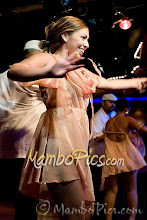 In the film Salt of the Earth, viewers are able to analyze the historical significance behind the film. Through the production of film, producers have the ability and oppotunity to incorporate real life events and/or issues. However, not everyone will approve of the film or feel that it is appropriate to air.
In the film Salt of the Earth, viewers are able to analyze the historical significance behind the film. Through the production of film, producers have the ability and oppotunity to incorporate real life events and/or issues. However, not everyone will approve of the film or feel that it is appropriate to air.In the 1954 film, Salt of the Earth, during American Cinema in the Postwar Era, Herbert J. Biberman produces a film on Mexican -American miners who go on a job strike in a New Mexico town. This film is based on an actual strike. Biberman, unable to produce films in Hollywood, his crew and him looked for worthy social issues to put on a screen independently. The film a
 ttempts to retrieve and construct particular everyday-life condition. As we see in the beginning of the film, Esperanza (the wife of a miner) hanging her clean, wet clothes outside the home. We also see her in side the house as the usual 'house wife', cleaning, cooking for the family and ironing her husband's clothes, and taking care of the kids at home. Keeping in mind that she is expecting a child shortly.
ttempts to retrieve and construct particular everyday-life condition. As we see in the beginning of the film, Esperanza (the wife of a miner) hanging her clean, wet clothes outside the home. We also see her in side the house as the usual 'house wife', cleaning, cooking for the family and ironing her husband's clothes, and taking care of the kids at home. Keeping in mind that she is expecting a child shortly.Her husband, Ramon is a miner at the Empire Zinc Mine and his duty as a father and husband is to provide financial stability.
How does this film convey the passage of 'time'?
Esperanza i a great example; she has patience. Towards the beginning of the film she complains to Ramon that she struggles to get hot water to cook and bathe. While the Anglo miners' have hot running water at their homes. This is when the dilemma began. A group of women, some who were also wives of miners, decide to picket outside the mine for more sanitary conditions. The women do not give up and continue to do this for a while.
We also see 'time' in the jail cell, when the women start to chant for milk. Esperanza had given birth to her third child even when the sheriff refused to call a doctor. The new-born was not drinking the milk provided by the station so that is why the women began to chant. Time was a virtue to them and they were not going to stop until the received the proper milk the new born needed. This also applies to the right of women.
Decision making was also an aspect of the film as well as change. The women attending the union meeting, demanding plumbing and sanitation for their homes. However, the men see no point in the women right to vote or even voice their opinion. Of course the man end up with the last say during the discussion.
Esperanza has dignity and determination to win.
Indeed this film is an early treatment of feminism, because the wives instead of approving with their husbands, they play a different role in the strike; against their husbands wishes. In this film the women are the aggressive ones. They stepped up to the plate and did what 'men' were only allowed to do. The roles then switch in the film. While the women are held in prison along with Esperanza, her husband Ramon taker her role as 'house wife'. He begins to do the housework and realizes the validity of the womens complaints. The greatest vistory for the workers and the families is the realization that prejudice and poor treatment are conditions that are not always imposed by other forces. The ending of the film shows the determination of the people.



 Another one of my favorite images is of Bernhard’s first nude photograph inspired while shooting a large metal bowl for a Museum of Modern Art catalogue. There on from this one object Bernhard had an idea, she asked a friend who was a dancer to curl up in a large bowl like a baby in a womb. This photograph was titled “Embryo” (1934) the pale figure of the
Another one of my favorite images is of Bernhard’s first nude photograph inspired while shooting a large metal bowl for a Museum of Modern Art catalogue. There on from this one object Bernhard had an idea, she asked a friend who was a dancer to curl up in a large bowl like a baby in a womb. This photograph was titled “Embryo” (1934) the pale figure of the 



